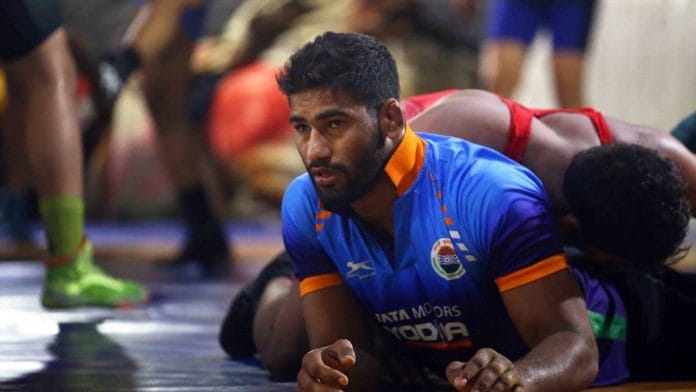Greater Noida: A 250 gm container filled with homemade ghee, four kg milk and a kg of curd have traveled nearly 50 km on a train and buses from Greater Noida in Uttar Pradesh to reach Delhi’s Hanuman Akhara in Karol Bagh. It’s all for a champion in the making who wishes to break world records and some stereotypes. The latter being the domination of the national wrestling scene by Haryana. Jonty Bhati, from Jamalpur, played the senior Asian Championship in Amman, Jordan for the third time. He may have lost to Iran’s Mohammad Mobin Azimi. But he is the first wrestler from Greater Noida to make it this far.
The 23-year-old wrestler and his ecosystem, which majorly includes his family and the coach, have picked best practices from Haryana grapplers and their families.
“When I saw Ravi Dahiya’s parents bringing him homemade food, I knew we had to do the same for Jonty. With wrestlers like my brother, Greater Noida is giving a tough competition to Haryana in wrestling,” said Jonty’s elder brother Abhishek as he dragged a 10 kg milk can into the Delhi akhara. Dahiya, who hails from Haryana, was Jonty’s opponent during the trials for the Asian Championship that were held in March.
Jonty’s journey—from wrestling in a mud pit behind the village temple to representing India on an international stage—captures a steady rise of Greater Noida in the wrestling arena. Once known for its sugarcane and wheat fields, Jamalpur is now finding a new identity through wrestling. Local mud-pit akahras are coming up in villages far from Jamalpur—in Noida sector 115, Junedpur and Deka village. For the local people, Greater Noida’s Gujjars are an answer to Haryana’s Jats. In villages adjoining Jamalpur such as Rajpur Kalan, Deota, and Rauni around 50 young boys are now swapping farm tractors for wrestling shoes. Seven months ago, the first government wrestling facility opened in Greater Noida’s Sector 37.
“Jonty has put Greater Noida on the wrestling map. We’re now seeing not just rural boys but also urban kids flocking to the akharas,” said Anita Nagar, Deputy Sports Officer, Greater Noida.
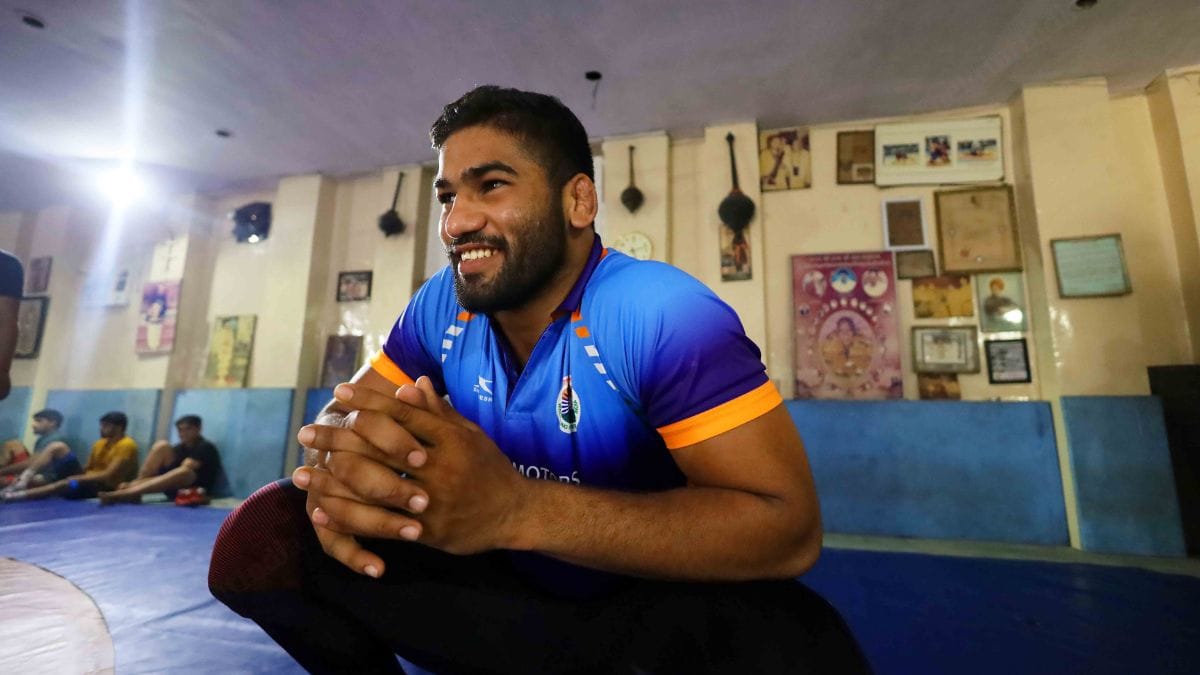
At the Hanuman Akhara in Delhi, Jonty has made himself immune to the outside world, his only focus his game. He licked the ghee off his fingers, wiped his hands, and stepped onto the mat.
On one of the walls in the wrestling arena in Hanuman akhara, bold letters declare: Our Eyes Are on the Gold. A message that also resonates with Jonty’s villagers in Jamalpur.
Jonty has clinched a bronze at the Junior Asian Championship and gold at the Senior Asian Championship. In addition, he has received a gold medal in the National Games and won the National Championship 15 times.
“He’s a hero not only in his village but across Greater Noida. Soon, we might see an Olympics gold from Greater Noida too,” said Abhishek, as he lugged the 10 kilo milk can inside the Hanuman akhara in Delhi.
Delhi’s Guru Hanuman Akhara is another indicator of the rise of Noida and Greater Noida players in the national wrestling mix.
The akhara took its name after the legendary wrestling coach of India, Vijay Pal Yadav, popularly known as Guru Hanuman. The birth of akhara dates back to pre-Independence India in 1925 by Yadav. Since then, it has served as a training ground for wrestlers from Haryana, Uttar Pradesh and other parts of India.
“Earlier, Hanuman Akhara was brimming with wrestlers from Haryana. But today, there are almost 70 wrestlers from Greater Noida and Noida training there,” said Jonty.
“1… 2… 3…stretch… 1… 2… 3… stretch,” Jonty mutters under his breath, bending and lifting the weight of his body up and down.
In the corner, his elder brother Abhishek Bhati, who remembers his brother’s achievement on finger tips, pours milk into a steel glass, spreads homemade ghee onto a roti from the mess, and mixes sloppy cubes of curd with chopped vegetables to make raita.
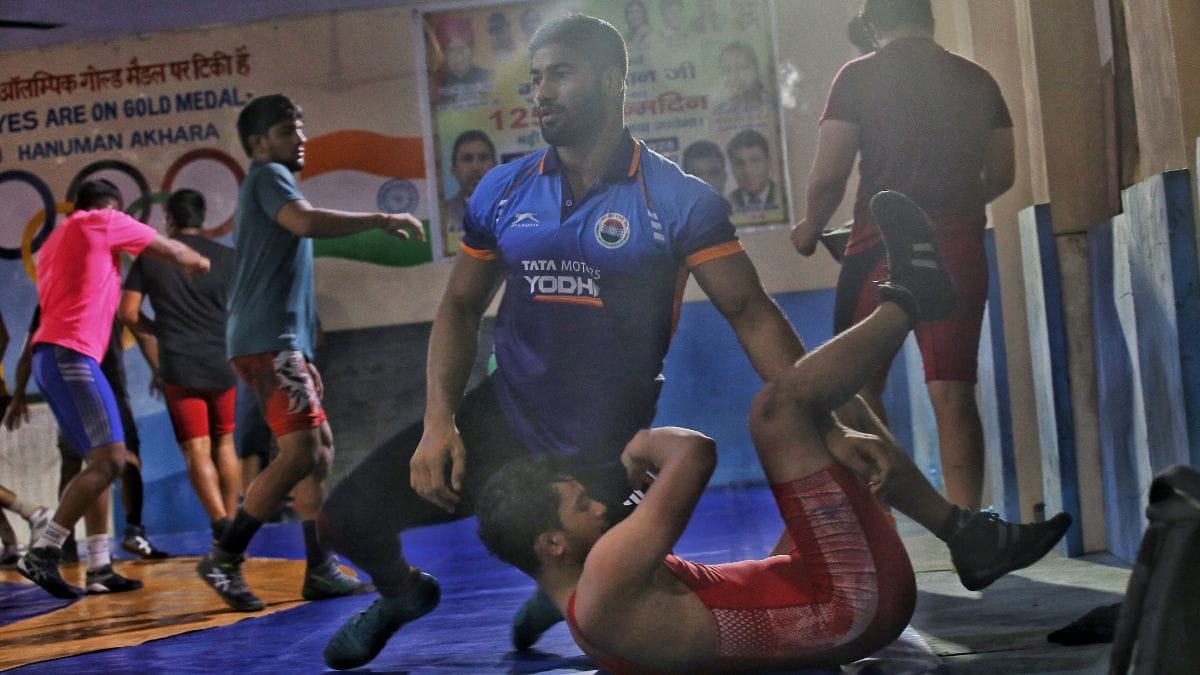
“Eight international tours, 15 national championship appearances, four-time Bharat Kesari and two-time UP Kesari. And he is just 23,” said Bhati, as he counted on his fingers.
Abhishek ensures Jonty eats in front of him. Only then does he pack the empty utensils and brace himself for the journey home— a sweaty bus trip, followed by a crowded train ride till Dankaur railway station in Greater Noida.
“In Haryana, you have an akhara in every village. We don’t have that kind of facility in Greater Noida yet. But Jonty is changing that. Through him, wrestling as a sport got acknowledged in Greater Noida,” said Abhishek.
Also read: Indian weddings get a new destination in tier-2 cities—Rishikesh, Khajuraho, Corbett
Wrestling in the backyard
At the Daku Baba temple in Jamalpur, young boys slip into their wrestling clothes. They have come from different villages to practice wrestling in the backyard of the temple. Some plough the mud pit, preparing it for practice, while others stretch and jog along the edges of the mud pit.
It is the same mud pit that gave birth to Jonty’s career. Today, it has become an inspiration for young boys who want to follow in Jonty’s footsteps.
“Jonty bhaiya, hamare sher hai,” they all cry in unison. One of the younger aspiring wrestlers, 13-year-old Sonu Nagar travels eight kilometers every day from Rauni village to train. He said whenever Jonty visits Jamalpur, he stops by the akhara to teach them new defense techniques.
“He always says, fight till the end. Don’t give up just because the opponent overwhelms you,” Sonu said proudly. Jonty’s success has become a source of Gujjar pride. “Apne Greater Noida ke Gujjar, Haryana ke Jat se kam hai ke!” a young boy shouts, mimicking Aamir Khan’s dialogue from Dangal.
When there were no akharas around, Daku temple was the wrestlers’ only ground. Village elders recall how Jamalpur was once known as the village of pehlwans.
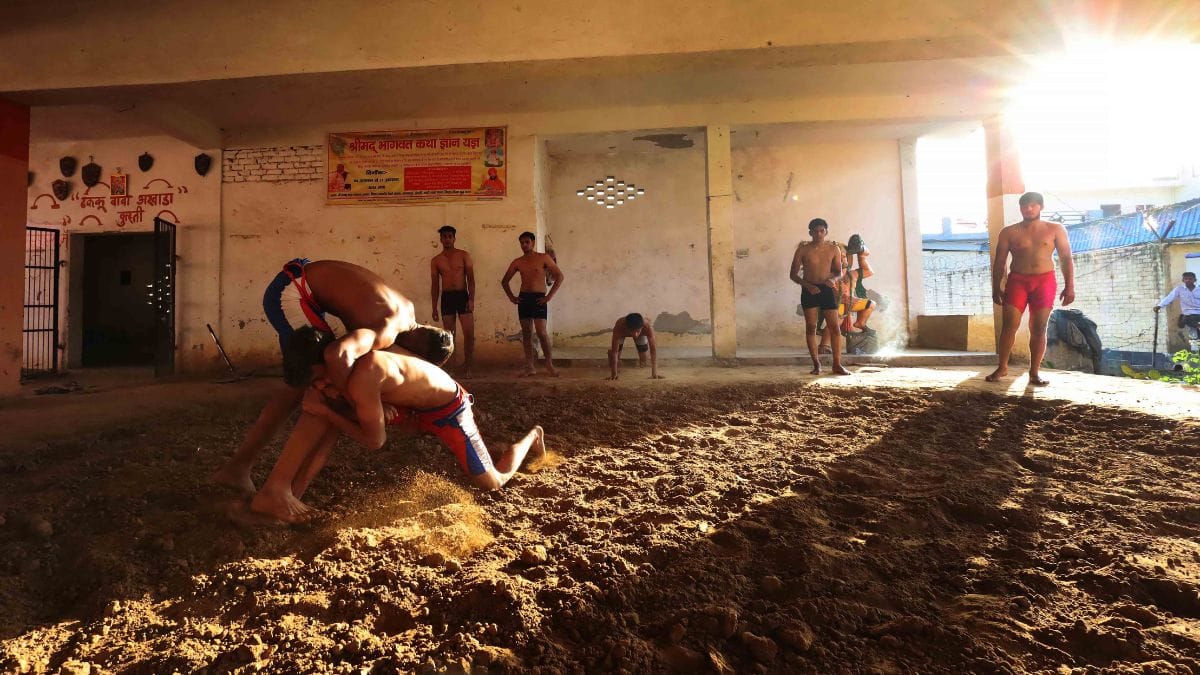
“Some 100 years ago, a pehlwan made the mud pit for wrestling in the temple’s backyard. It attracted young boys, but only a few took wrestling seriously,” said Abhishek.
On the first floor of the temple is the mat area. The synthetic mat was brought in six years ago after Jonty joined Hanuman Akhara in Delhi. Jonty would come to his village with tales of his national matches—describing how bouts were fought on mats and how mud pits were no longer the trend.
Jonty had local inspirations in Rajinder, Rajesh and Ranjeet Bhati. Ranjeet eventually became his coach, while Rajesh, the first from their village to win gold at a police match in the USA, inspired Jonty to take up the sport.
“I was young when Rajesh came to the village with a gold medal. It inspired me. Since then, I have been dreaming of a similar welcome in my village,” said Jonty.
Jonty’s welcome turned out to be grander.
Last year, at Pari Chowk in Greater Noida, banners welcomed Jonty home from Jordan after he won gold in the U-23 Asian Championships. Around 1,000 people from 20 villages had gathered to celebrate the pehlwan.
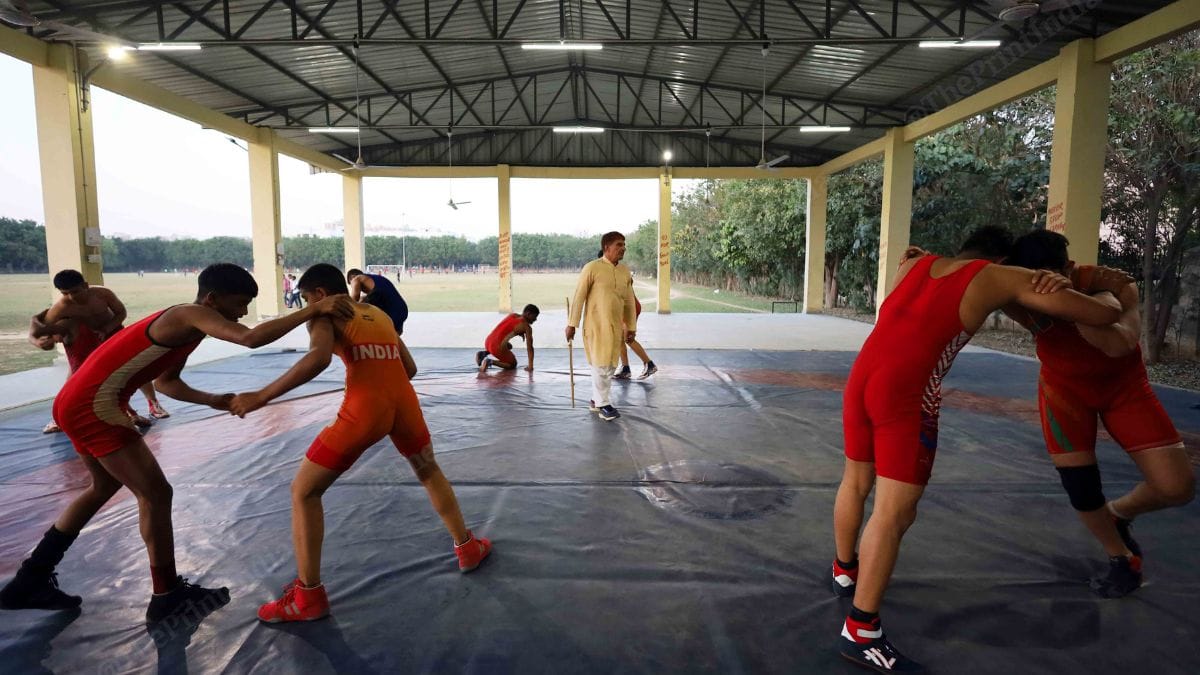
Akash Nagar is another rising star wrestler from Greater Noida. Another Gujjar from Jamalpur village. Last year, an Instagram page named Gujjar Dillemaas posted a photo of Akash, congratulating him for winning gold at the Senior National Wrestling Championship. Nagar too played the Asian championship two years ago.
It was Jonty, Rajeev, another wrestler from Jamalpur, and Ranjeet—along with other budding wrestlers—who approached the Greater Noida Authority, demanding a dedicated wrestling infrastructure in Greater Noida. It took two years of persistent knocking on the Authority’s doors before they finally succeeded. That’s how a wrestling area inside Sector 37 ground came up.
A huge tin shed now stands there, with a mud pit in one corner and a mat area in the other. In between, dumbbells, climbing ropes, and scattered shoes lie around—markers of the wrestlers’ daily grind. Ranjeet is now the head coach here.
“Earlier, only boys from rural areas were interested in wrestling. But now, we are getting requests from urban areas too,” said Ranjeet who trains around 100 budding wrestlers at the facility.
However, he admitted that Greater Noida is just starting out.
“We still have several years to reach where Haryana is right now. The authorities have no interest in wrestling. We really had to pursue them hard. There was one mud pit on the outskirts of Greater Noida, but without a shed, it was spoiled most of the time,” said Ranjeet as he clapped, calling the boys to start the bout.
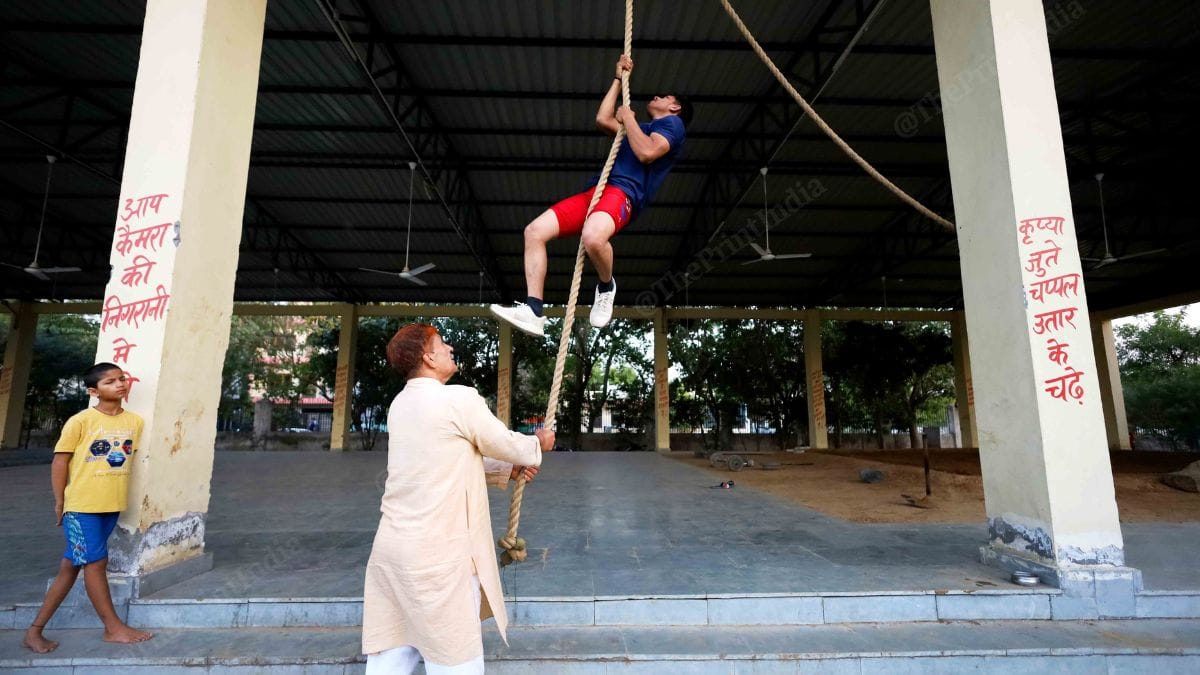
Years ago, it was Ranjeet who first tried convincing Jonty’s parents when they were reluctant to let him practice at the temple. “His parents thought wrestling wouldn’t yield any results. Nobody in his family had ever participated in the sport. So, there was a huge lack of awareness,” said Ranjeet.
But Jonty didn’t listen. He would discreetly slip out of the house early in the morning and head to practice. “I always knew this boy had something in him. He was destined to make it big,” said Ranjeet.
After four years of rigorous training, Ranjeet requested Jonty’s parents to send him to the Hanuman Akhara. “Had there been proper facilities here, why would anyone need to go to Hanuman Akhara?” he asked.
At the stadium, Ranjeet works for free. It’s his passion that drives him. He starts training at 4am, heads home at 8am, returns by 1pm, and stays with the students until in the night. During matches, he even sleeps in the stadium.
“I want to create as many Jontys as I can from Greater Noida. That will be my success story,” he said.
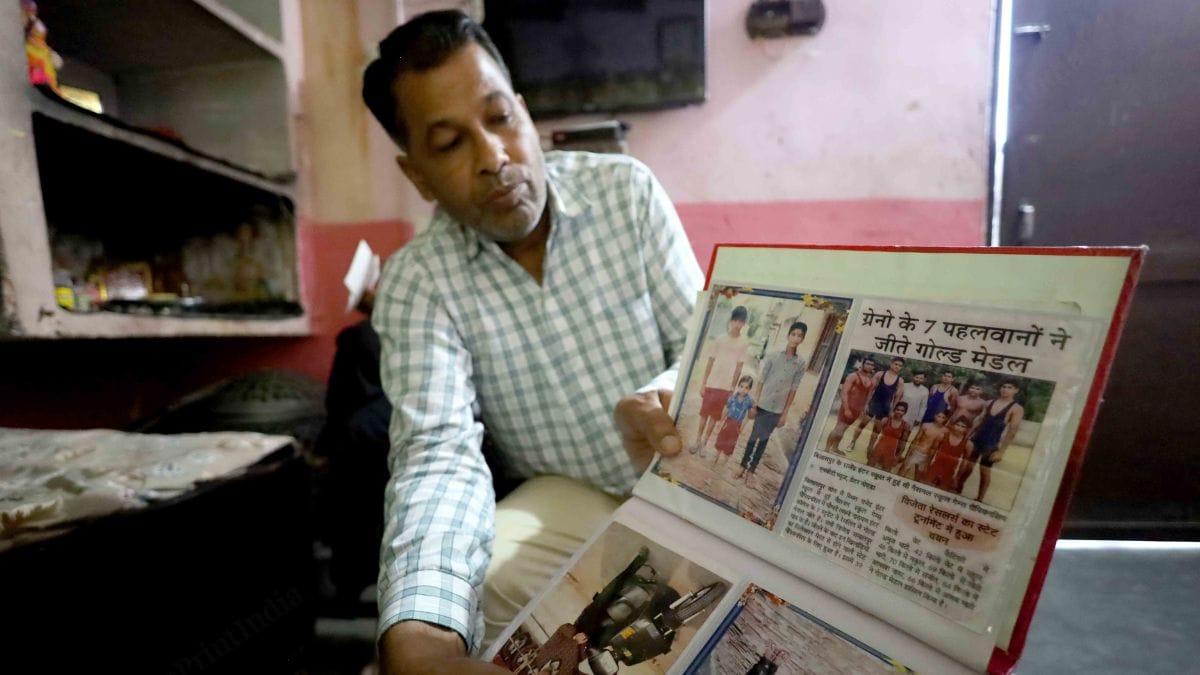
Also read: Tamil Nadu is changing. Is anti-Hindi sentiment still the same?
A champion in making
It’s a Tuesday. Jonty bowed outside the small Hanuman temple on the akhara premises in Delhi, after his practice session. His day begins at 4am. He heads to the highway for his morning run, returns for a glass of almond milk, stretches, and then starts practice with his fellow pehlwans. This is his daily routine.
“Nyune, aaja (Come here),” Jonty called a fellow wrestler in Haryanvi. Though a Gujjar from Greater Noida, Jonty has picked up Haryanvi over the past seven years.
“Everyone here speaks in Haryanvi. So, one has to learn. It helps reinforce the brotherhood.”
Walking with his arms swinging back and forth, distant from his upper body, Jonty entered the small office room. This is where he spends his alone time. Since qualifying for the Asian Championship for the third time in a row, he is looked at with more respect—“just like the wrestlers of Haryana,” he said.
The office walls are decorated with photographs of wrestler and legendary coach Vijay Pal Yadav, known as Guru Hanuman, a Dronacharya and Padma Shri awardee. Jonty stepped toward a portrait where Hanuman, wearing a coat with an Indian emblem on the chest pocket, partly bald, sits on the ground with graceful composure, his right arm resting on the grass. Jonty bent and touched the feet in the portrait.
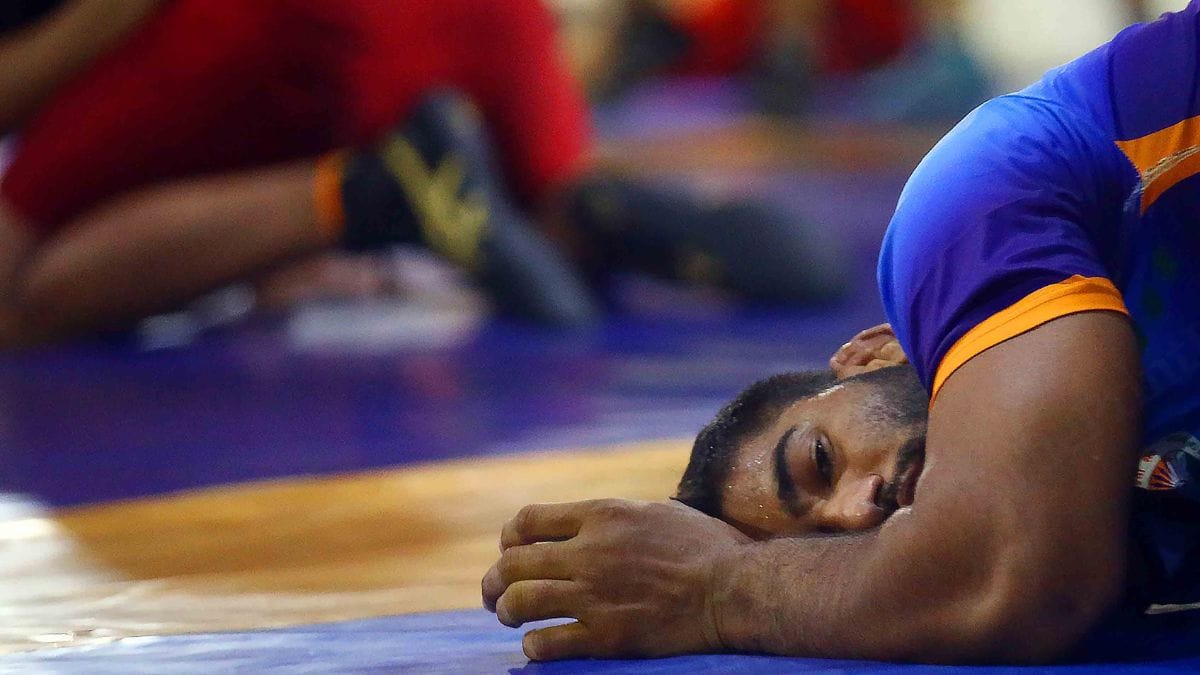
When Delhi Chief Minister Rekha Gupta visited the akhara on 15 March on the 125th anniversary of Guru Hanuman, Jonty’s name came up several times during her interaction with the wrestlers, he was told. At that time, Bhati was at Indira Gandhi Stadium, preparing for his trials.
“I regret not being here because I wanted to participate in the arrangements for Guru Hanuman’s anniversary. He has shown us the way—the budding wrestlers,” said Jonty, pointing at a photo of Guru Hanuman with Indira Gandhi, Rajiv Gandhi, and a young Yogi Adityanath. Guru Hanuman died in 1999.
The wrestler sank into the sofa, unlocked his phone, and started watching clips of foreign wrestlers—observing how they defend, strike, and counter. A message popped up on his Asian Pehlwans WhatsApp group: “Wrestlers, remember! This time, you’ll be facing some highly experienced opponents. There’s no room for mistakes,” read the message.
“Every match should frighten you. Only then will you succeed,” he said, stretching his hand to punch in the air.
Jonty also has an opinion on wrestler Vinesh Phogat’s heartbreaking exit from the Olympic final.
“Had I been in her place, I wouldn’t have eaten anything. I would have slept on an empty stomach. How can you be careless about such a big match?” the Jamalpur wrestler said, shaking his head in disbelief.
The wrestler never had a girlfriend, doesn’t watch movies, and until a month ago, hadn’t stepped into a cinema hall. His fellow pehlwans had to drag him to PVR Connaught Place to watch Pushpa.
He has only one indulgence? Haryanvi singer Masoom Sharma. Jonty plays his upbeat songs on a loop while working out.
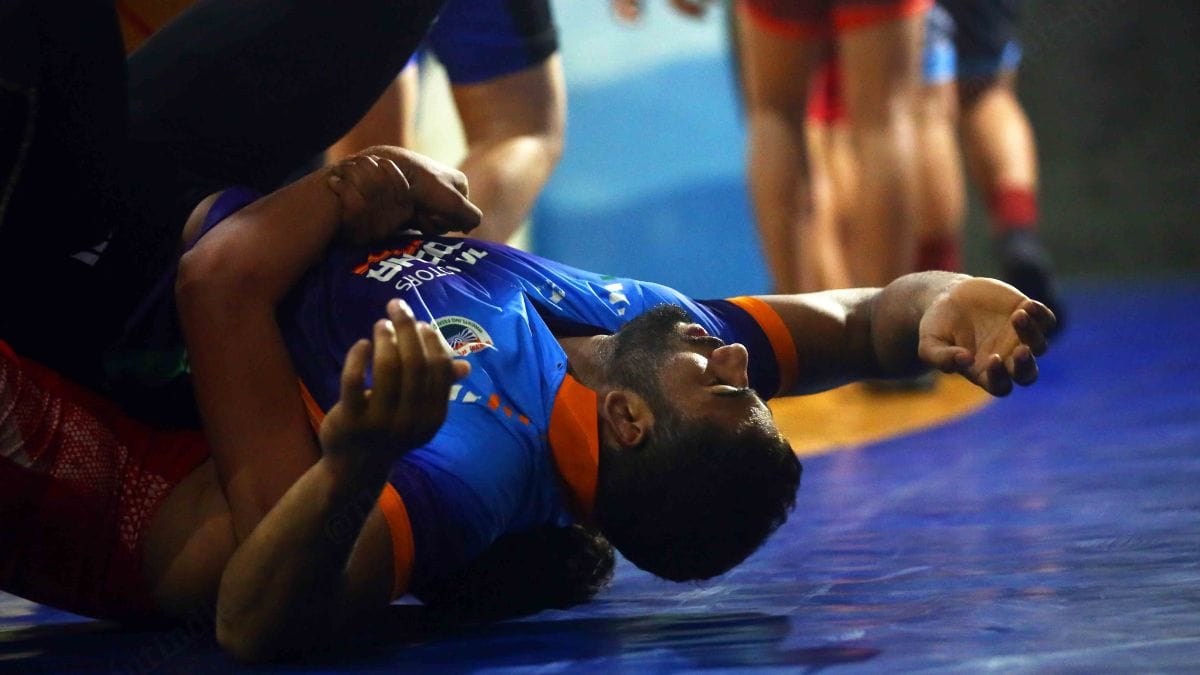
His visits to his village are also rare. Even on Holi, he stayed back at the akhara, missing the celebrations at home. His mother is still upset.
“Either you focus or you let go of your goals. You can’t have it both ways. It might hurt people around me for a while, but I have a bigger responsibility on my shoulders—to make Greater Noida the capital of the wrestling world,” said Jonty, grabbing his energy drink.
Also read: God’s own country is high on MDMA. Kerala school, college students flood rehabs
It takes a family
During his Asian Championship trials, the atmosphere at Jonty’s Jamalpur home was tense. Sitting on a cot in the courtyard, Jonty’s father, Bijender Bhati, and his mother, Sunita Devi, were glued to a YouTube channel, Kusti Ki Pahchan, livestreaming the trial on their phone. Jonty was trailing by a point against Punjab’s Sahil Dalal.
Clutching his phone, Bijender shouted, “Jonty, side se jaa! Side se jaa!” Unable to bear the tension, Devi walked upstairs to the small temple she had built on a shelf. With folded hands, she whispered, “Bhole Baba, Jonty ko jitwao.”
Whenever Jonty wrestles, the entire household drops everything and stays glued to their phone screens. Devi mostly sits before the gods, praying for his victory.
“I get anxious when he plays. He has given up everything to make it big in wrestling, and now each match counts,” said Devi, pulling her veil down to cover her forehead properly.
On regular days, though, the mother and father are caught up in a different routine—preparing nourishing food for their son. Every evening, Bijender steps into the shed in the backyard of the house and begins milking his two buffaloes.
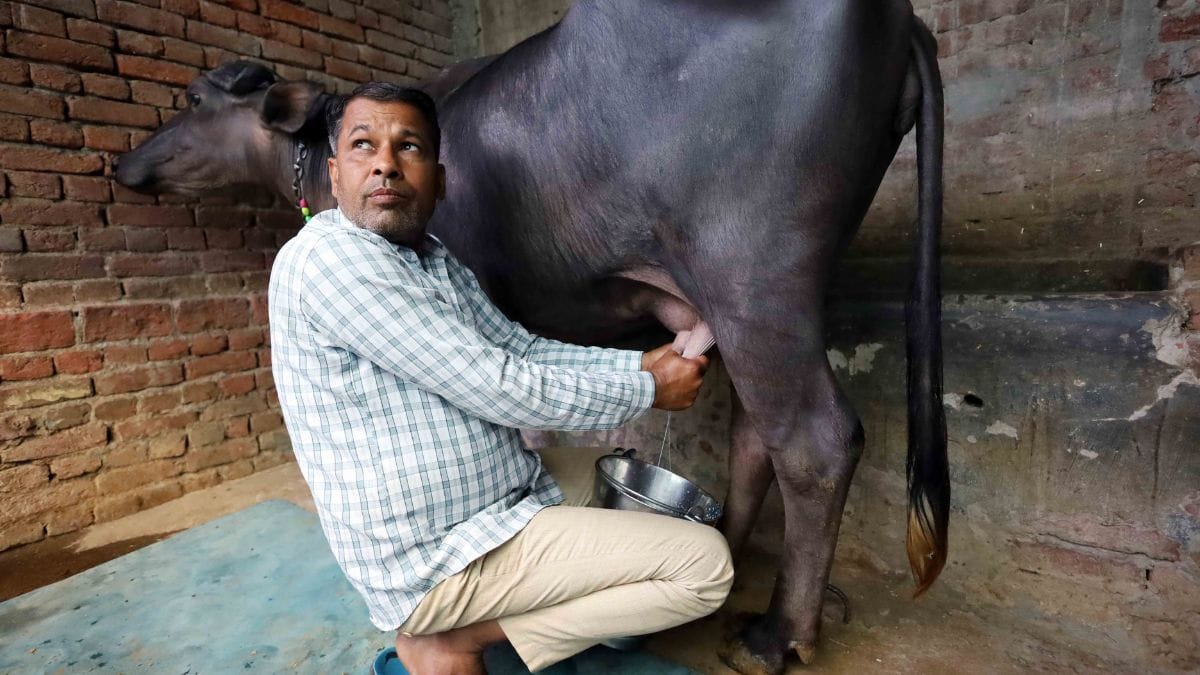
“Pehalwan only drinks buffalo milk,” he said. The family has started addressing Jonty as Pehlawan.
A room in the backyard houses his medals and trophies. The family is building a new house nearby and plans to dedicate a special room for all his awards, trophies, and Hanuman’s gadda, which he received after winning Bharat Kesari. It will be opened for people.
“Special guest room,” exclaimed Abhishek!
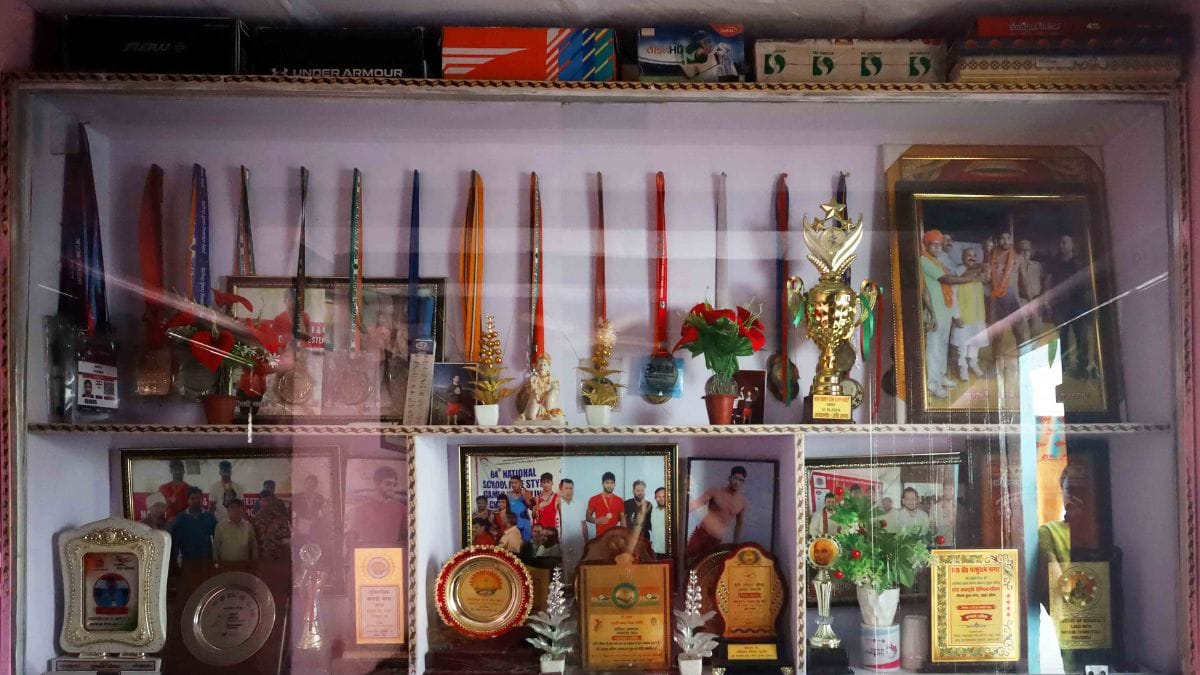
On the first floor of the house, Devi prepared ghee the old-fashioned way. She boiled the fresh buffalo milk over a wood-fired stove kept in the balcony until a thick layer of malai (cream) forms on the top. This cream is gathered in a steel container.
“He has progressed because of our pure food,” said the mother. Devi’s younger sister has also sent her elder son to Hanuman Akhara to learn wrestling from his brother.
Every afternoon at 3pm, Devi steps onto the balcony, shielding her eyes from the sun. She calls out to her sisters and husband, “Abhishek has reached.” From her balcony, she can see the railway tracks leading to Dankaur railway station. From every household, one can watch the arrival and departure of trains.
“Jonty was drinking milk from outside, and it wasn’t as pure. That’s when we realized how they were succeeding in wrestling,” said Abhishek.
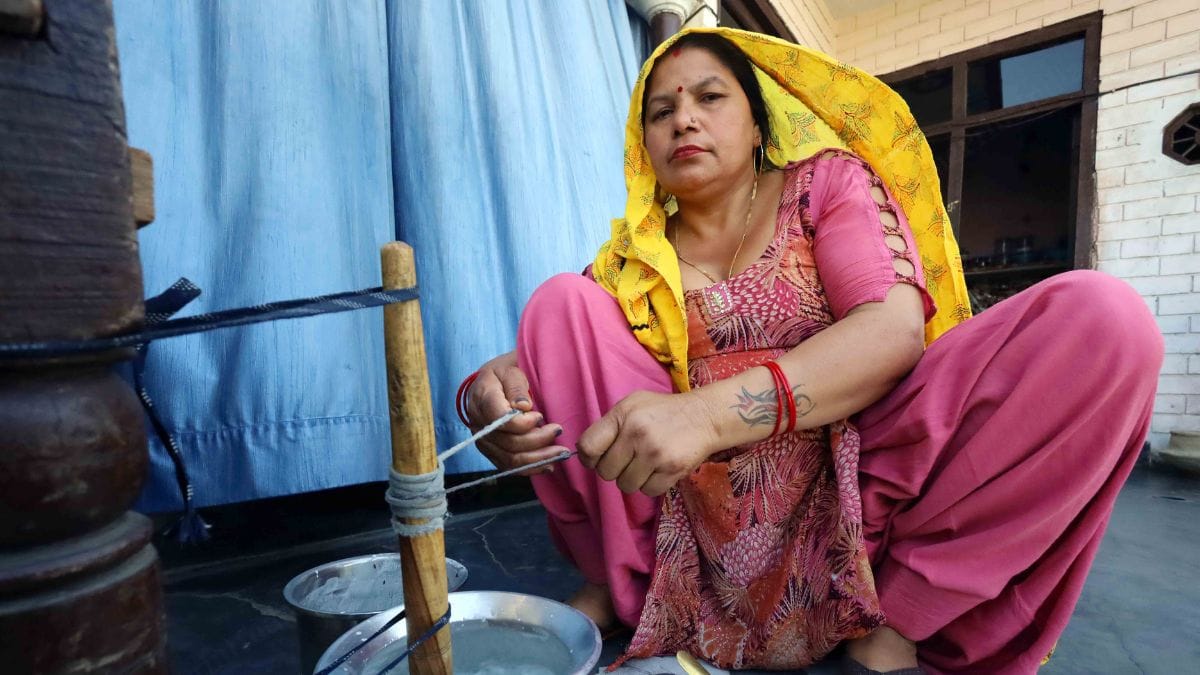
Meanwhile, at Sector 37’s newly created wrestling area, Ranjeet is showing his students a clip from one of Jonty’s Asian Championship match from last year. He pepper it with brief comments on Jonty’s strikes and defenses.
10-year-old Sandhaya raises her hand. “I also want to join you,” she said, her voice brimming with glee. She is the only girl practicing with the boys.
“I want to become a wrestler like Jonty bhaiya.”
(Edited by Anurag Chaubey)



